explore the critical role of farm sheds as a bastion against Shepparton’s diverse climatic conditions, from scorching summers to unpredictable rainfall. This article delves into the design, materials, and features that ensure these structures protect livestock and crops effectively. From durability to energy efficiency, we examine the best practices for farm shed construction and maintenance in this region, ensuring your agricultural investments remain secure and productive year-round.
- Understanding Shepparton's Climate and Its Impact on Agriculture
- Design Considerations for Farm Sheds to Withstand Shepparton Weather
- Durable Materials for Farm Shed Construction in Shepparton
- Advanced Features in Farm Sheds to Protect Crop and Livestock
- Energy Efficiency in Farm Sheds: Adapting to Shepparton's Variable Temperatures
- Maintenance Strategies for Farm Sheds in the Shepparton Region
Understanding Shepparton's Climate and Its Impact on Agriculture
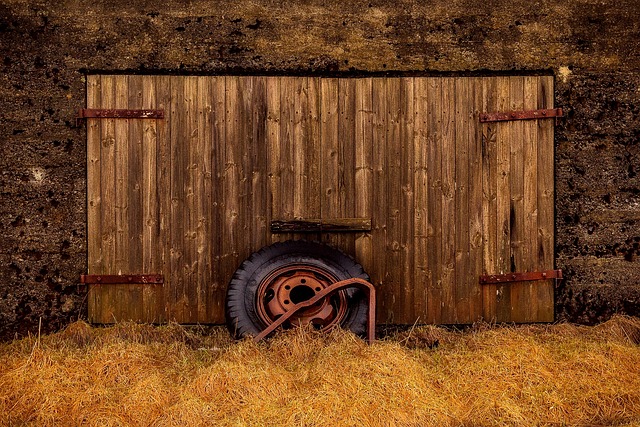
Shepparton, located in the Goulburn Valley region of Victoria, Australia, is known for its rich agricultural sector, which thrives under careful management amidst its distinct climate. The region experiences a Mediterranean climate with hot, dry summers and mild, wet winters. This variability requires farm structures that provide both protection from the scorching sun and shelter during unpredictable rainfall and storms. Farm sheds in Shepparton are specifically designed to mitigate the effects of these weather patterns, ensuring the safety and productivity of crops and livestock.
The extreme temperatures, particularly the high UV index during summer, necessitate farm sheds with robust roofing materials that reflect sunlight and insulate against heat. Conversely, during the cooler months, adequate ventilation and perhaps even partial shade cloth can extend the growing season for temperature-sensitive produce. Additionally, the sheds must be constructed to withstand strong winds and heavy rains, which are common in the area. The strategic placement of farm sheds, considering the prevailing wind directions and the topography of the land, further enhances their effectiveness in protecting agricultural assets from Shepparton’s challenging weather conditions. Farmers in the region rely on well-designed sheds to maintain high yields and quality produce throughout the year, making them a cornerstone of sustainable farming practices in this climate.
Design Considerations for Farm Sheds to Withstand Shepparton Weather
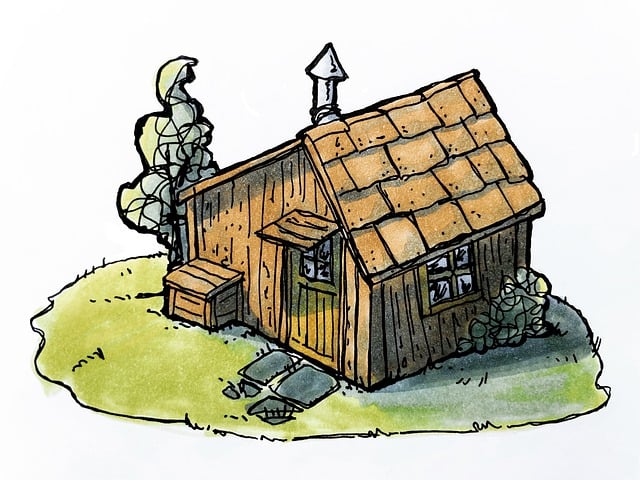
In the Shepparton region, where weather conditions can be unpredictable and harsh, farm sheds must be designed with robustness and versatility in mind. These structures serve not just as storage spaces but also as critical shelter for livestock and agricultural equipment. To withstand the area’s extreme temperature fluctuations, farm shed designs often incorporate materials that have high thermal mass, such as concrete or weathered steel, to maintain stable internal conditions. The roofing should be of a style that efficiently channels water away from the structure during heavy rains, which are common in Shepparton, minimizing the risk of leakage and water damage. Additionally, farm shed designs must consider the prevailing winds; the orientation and aerodynamic design of the building can reduce wind load, preventing structural stress and potential damage during storms.
Furthermore, the design must account for the region’s high UV index. Durable, UV-resistant materials are essential to protect both the contents within and the longevity of the structure itself. Insulation is another critical factor, not only for temperature control but also for soundproofing against the noise generated by storms or hail. Ventilation systems designed to operate in various weather conditions ensure proper airflow and can be complemented with automatic openers that respond to temperature changes, maintaining a comfortable environment for stored goods and animals. These design considerations are pivotal in creating farm sheds that not only endure the demanding Shepparton weather but also remain functional and durable over time.
Durable Materials for Farm Shed Construction in Shepparton
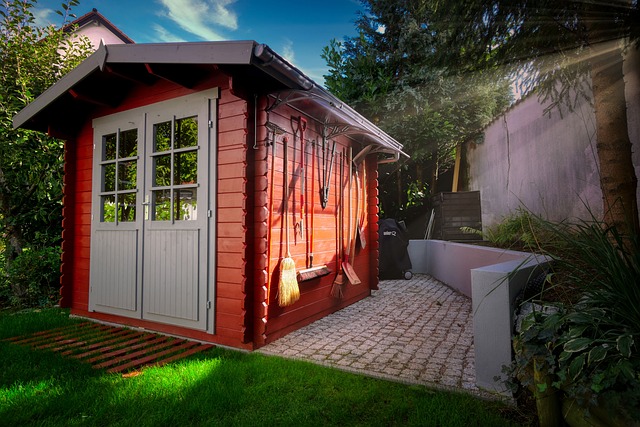
Advanced Features in Farm Sheds to Protect Crop and Livestock
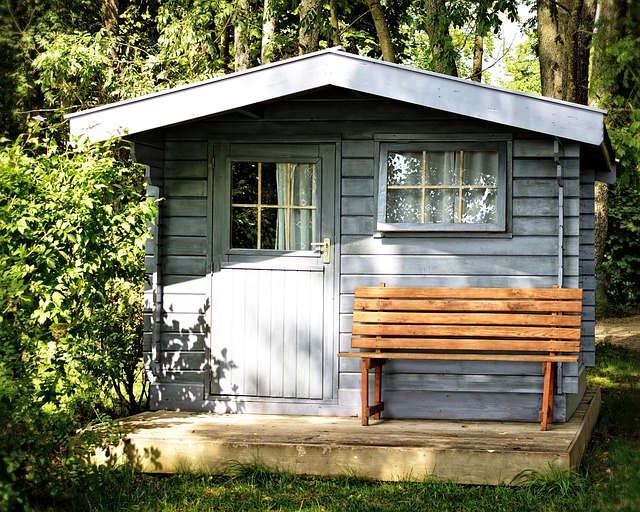
In Shepparton, a region characterized by its variable weather patterns, farm sheds serve as critical shelters for both crops and livestock. Modern farm shed designs incorporate advanced features that cater to the specific climate challenges faced in this area. These structures are engineered with high-strength materials resistant to strong winds and heavy rains common during the unpredictable weather shifts. The roofs are often constructed with durability and aerodynamics in mind, featuring profiles that minimize wind load while maximizing natural light for optimal plant growth. Additionally, robust eave designs channel rainwater into guttering systems effectively, ensuring runoff is directed away from the shed’s foundation to prevent erosion and water damage.
Innovative ventilation systems are also a cornerstone of these advanced farm sheds. They allow for the controlled exchange of air to maintain temperature and humidity levels suitable for sensitive agricultural produce. This climatic control helps in preventing overheating, which can be detrimental to livestock well-being and crop quality. Moreover, the integration of energy-efficient LED lighting not only reduces power consumption but also mimics natural light cycles, benefiting the health of animals and promoting plant growth. Farmers in Shepparton are increasingly adopting these sophisticated farm sheds to protect their investments from the harsh elements, ensuring that their crops receive the best care possible and their livestock remains healthy and productive throughout the year.
Energy Efficiency in Farm Sheds: Adapting to Shepparton's Variable Temperatures
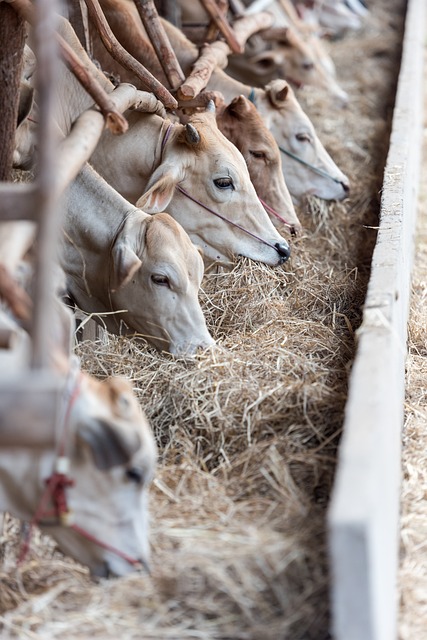
In Shepparton, a region characterized by its variable temperatures and harsh climatic conditions, energy efficiency in farm sheds has become a critical concern for farmers seeking to protect their livestock and agricultural equipment. To mitigate the impact of extreme heat in summer and cold spells during winter, farm sheds are being designed with advanced insulation materials that maintain optimal internal temperatures. These materials not only reduce reliance on artificial heating and cooling but also decrease overall energy consumption. Additionally, strategic placement of shed structures to maximize natural sunlight and shade can significantly enhance the thermal comfort within, leading to energy savings.
Furthermore, incorporating energy-efficient technologies such as solar panels into farm sheds allows for a sustainable power supply. This not only cuts down greenhouse gas emissions but also provides a reliable power source during outages or peak demand periods. In Shepparton, where the weather can be both unpredictable and extreme, adapting farm sheds to be energy efficient is not just about saving costs; it’s a strategic investment in the sustainability of agricultural operations. By leveraging the latest innovations in sustainable design and renewable energy integration, farmers can ensure their livestock and equipment are well-protected against Shepparton’s variable temperatures throughout the year.
Maintenance Strategies for Farm Sheds in the Shepparton Region
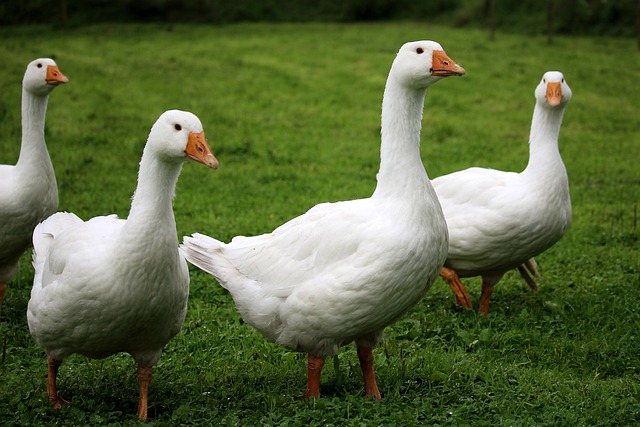
In the Shepparton region, where weather patterns can be unpredictable and harsh, maintaining farm sheds is crucial for protecting agricultural equipment and crops. Effective maintenance strategies should focus on regular inspections to identify any structural damage or wear from frequent storms, high winds, or intense sun. Employing durable materials like galvanized steel or aluminum for construction can mitigate the impact of these elements, ensuring longevity and resilience. Regular upkeep includes tightening fasteners, repairing minor damages promptly, and performing routine cleaning to prevent rust and mold growth. Additionally, employing a corrosion-resistant coating on metal structures can further protect against the corrosive effects of Shepparton’s humid climate. Implementing a well-defined maintenance schedule can prolong the lifespan of farm sheds, safeguarding the investments made by local farmers and contributing to the overall productivity and success of their operations.
To enhance the durability of farm sheds in Shepparton, it’s advisable to consider designs that accommodate natural ventilation, which can alleviate the strain on cooling systems during heatwaves. This design aspect, combined with ample gutters and downpipes, ensures that water is effectively channeled away from the structure during rainfall, reducing the risk of leaks and water damage. Regular maintenance also involves inspecting and clearing these systems to ensure optimal functionality. By adhering to these strategies, farmers can maintain a secure and functional environment for their equipment and livestock, regardless of Shepparton’s dynamic weather conditions.
